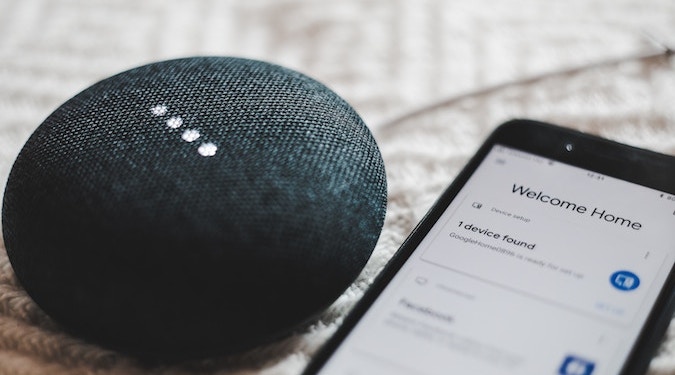Have marketers realised the full potential of voice marketing?
Share
Is this thing on? Karen Lewis explores how voice technology is changing consumer search behaviour, why so few marketers are engaging with voice and why brands who don’t risk getting left behind.
 Connected devices and smart speakers are making their way into the everyday lives of Australians. More devices are able to connect to smarter voice technology, meaning more consumers are turning to voice to set reminders, message loved ones and even search for products.
Connected devices and smart speakers are making their way into the everyday lives of Australians. More devices are able to connect to smarter voice technology, meaning more consumers are turning to voice to set reminders, message loved ones and even search for products.
The use of voice-enabled devices is growing locally, with a recent report from IHS Markit ranking Australia as seventh highest in the world in terms of market penetration for the smart speakers. Global research firm Gartner predicts that by 2020, 30% of all web browsing will be done without a screen.
Related: Forrester VP on voice tech: “Everyone, including Amazon, fails the trust test” »

So what does the uptake of voice mean for marketers and brands?
Music streaming giant Spotify is already taking steps in this space by exploring the capabilities of voice through a new voice-enabled ad experience on mobile – allowing people to use verbal commands to engage with advertising content. This format allows for advertisers to develop content that’s more unique and engaging for consumers.
However, Spotify is the minority here. According to research from Bing Ads, only 2% of marketers are allocating spend towards voice despite more consumers turning to the technology for searching for products or recommendations.
With voice technology making its way into the homes of Australians, it’s important to think about how marketers and brands can take advantage of the technology to reach new customers.
Challenges
The adoption rate of voice marketing remains low. For marketers, there are specific distinctions between using text and voice. For starters, voice doesn’t offer the same visual experience as searching on a screen. Brands can’t grab the attention of the consumer with images or reductions in prices. On voice, the consumers are left searching independently as opposed to being served search recommendations or products from advertisers.
Another challenge for marketers is the use of keywords and search terms across voice. Search terms in text are specific and usually short with multiple phrases. For example, if a consumer searches ‘women’s red jacket,’ they will be shown results that display images of jackets from different brands, recommendations from the search engines shopping section and departments stores on where to buy a red jacket.
On the other hand, this same search experience is dramatically different on voice. The consumer won’t say, ‘Hey Google, women’s red jacket’. Instead they will likely ask about the nearest shop for women’s clothes or which shops are currently running a sale on jackets. Therefore, marketers need to understand the conversational tone of the consumer and mimic what they are likely to say.
Related: Voice technology is changing SEO: here’s what brands can do about it »
Opportunities
While there are challenges that marketers must overcome, there are also great opportunities in leading voice marketing. The technology is becoming more accessible and intuitive, so Australians will begin using this more often when searching for products or recommendations. Consumers want their lives to be made easier, quicker and more convenient. Voice has the power to do this.
Salmat’s research found that consumers are most interested in using an in-home voice assistant to research and purchase groceries (52%), electronics (46%), holidays and travel (34%) and clothing and accessories (34%). At the moment, some of Australia’s biggest retailers are using Lasoo List as their first stepping stone into voice marketing – a technology that enables Australian shoppers to create shopping lists using their voice, and have their Google Assistant recommend the best deals for products on their list. For example, if the consumer adds tuna to their list, they will be notified which retailer offers the best deals for the week.
However, voice isn’t limited to just these sectors. Almost all sectors across both B2C and B2B can benefit from using voice as part of a wider strategy that incorporates search, email and content marketing.
Preparation
With any new technology, there is a learning curve. The industry is still yet to understand the core value of voice technology and is still coming to terms on how to adapt its strategy across this new marketing channel.
The first step to achieving a better understanding across the industry is through testing voice marketing and seeing how it can apply to the brand. This way, marketers can achieve a better understanding of how the channel can influence the brand without having to commit to an entire voice campaign. The industry should be experimenting with voice to create positive case studies for voice marketing.
Marketers also need to partner with specialists who have recognised the trend of voice technology early and have identified strategies to utilise the channel. Voice marketing begins with smart SEO, therefore the specialists in the space understand how to better tailor search terms and keywords.
While some of the marketing industry is aware of the technology, a majority are yet to realise the full potential of voice marketing. The channel is not a short-term trend or a gimmick. It needs to be implemented across a long-term strategy, especially as more consumers are turning to voice as a way to search and discover. Voice is changing the way consumers think, behave, purchase and interact with technology; therefore marketers need to make sure they have a plan in place to remain competitive.
Karen Lewis is head of digital and ecommerce at Salmat
Further Reading:
- Brain trust: will voice marketing open a well of untapped consumer engagement? »
- Breaking the behaviour barrier with voice technology – a ways to go »
- Google Duplex changes the game in voice AI – can you tell the difference? »
Image credit:Piotr Cichosz
















